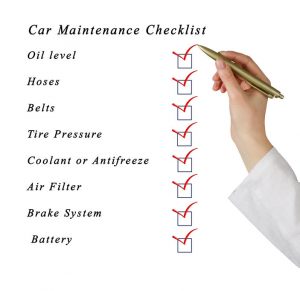
If you remember being in high school and getting your first car, you probably also remember wishing you could know some of the stuff you learned about taking care of the maintenance work a lot sooner. It turns out there’s a lot of responsibility involved with keeping your car ready to take off on the road, and your high schooler should know about at least some of the basic required tasks.
Helpful Beginner Maintenance Tips to Keep Track of
Car maintenance can be a real hassle, but if you are determined to keep a car at a young age, you should also be determined to learn all about keeping it going. While a car might be a fancy possession that young people love to show off, it’s also a precision instrument that requires a lot of attention and care.
One of the first things your high schooler should know is what to do when they get a flat tire. Although tires can be changed quite frequently due to conditions and wear and tear, sometimes you can get a random flat tire in the middle of nowhere. If that happens, it’s best to try and change it on your own, or call roadside assistance, so they can do it for you, if you don’t know how. But most importantly, before changing anything, make sure you pull the car off the road, even if it means destroying the damaged tire.
If the engine light comes on, then you have to drive your car to the nearest mechanic, so they can diagnose the problem. In case you notice smoke or strange noises coming from the engine, it’s very important to stop the car immediately and call your mechanic to check it and possibly tow it to safety.
The oil and oil filter are also a very important part of your car maintenance checklist. One of the main car maintenance facts your high schooler should know is that you have to change your oil once every 3,000 miles. Depending on the quality of the oil you buy, that amount can be extended up to 5,000 miles in best case scenarios.
Finally, it’s important to know when and how to change your battery as well as how to check to see if it’s damaged and how to remove and clean the posts safely. Remember that, whenever you remove the terminal, it’s imperative to always remove the negative one first. Checking the battery connection with an Ohmmeter and checking the battery itself with a Voltmeter is also essential before moving forward to replace the battery or try to recharge or connect it properly.
Teaching Your Teen
Failure to keep in mind some of these facts can often land you in a lot of trouble. Your car can end up stranded, or you could end up having to pay for a lot of repairs if, for example, your teen doesn’t replace the oil on time or removes the battery’s positive terminal first by mistake. There are many driving schools Denver has that offer vehicle maintenance courses so younger drivers are equipped and can take care of their car.
So make sure you teach your teen all about these basic facts and prepare them for how to deal with the unexpected once he/she is on the road for the first few times.